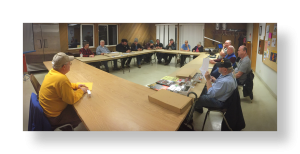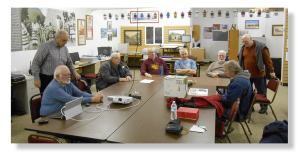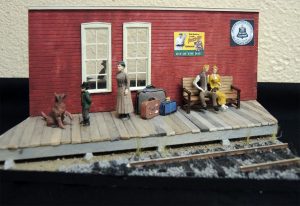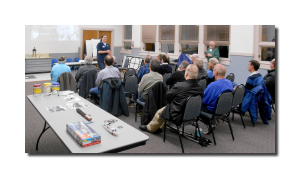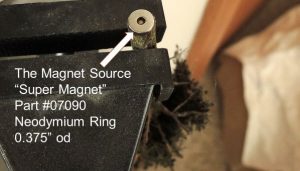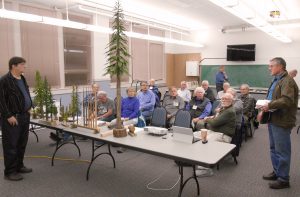This is the latest list of clinics.
9:00 Session
Modular Construction Techniques – Alan Murray
Have you considered starting or joining a modules group? Do you need some help getting started?This clinic will take the mystery out of module layout design, types of operations, module standards and the construction of individual modules.
You will be exposed to techniques developed for construction of simple, robust rectangular modules and complex inside/outside curved modules. Prototype examples will be available for viewing.
Alan Murray is a member of the PNW On30 Modules Group which has shown and operated its layouts at Monroe, Puyallup, Ilwaco, the Seattle Center, Portland and the 2012 National Narrow Gauge Convention. Thirty-two modules (130 feet) were assembled at the Monroe show in February 2017. He has constructed more than 20 modules for use by club members.
9:00 Session
Modeling the Southern California Citrus Industry – Bill Messecar, MMR
The clinic will cover Southern California citrus packing houses served by the Santa Fe, SP and UP in the 1950s. It will include how to kit bash existing models as well as scratch build models of these packing houses and other aspects of modeling the citrus industry such as orange groves
10:30 Session
Backdrops – Paul Rising
Techniques and tips from a well known artist, Paul Rising
10:30 Session
Construction Materials – Jim Sabol
Prototype construction methods still around during the steam-to-diesel transition era: stone, brick, pole, timber, stick framing. Flip Chart Talk plus Slides
2:15 Session
Scenery – pink foam, plaster and two-part epoxy. Tinting with acrylic washes – Russ Segner Room 3
Practical demonstration of the use of plaster in latex rubber molds to simulate rock structures. Use of two-part epoxy Bragdon casting will also be demonstrated, Tinting and coloration of rock will be demonstrated. This will be a two hour hands-on clinic.
2:25 Session
Trees – Big and Small – Mark Allen
Mark has assembled a fine clinic on building model trees. He will explain his techniques and those developed by Tom Beaton, Paul Scoles and others. Mark’s module won recognition at the Portland NMRA Convention.
2:25 Session
Water Falls and Streams – David Yadock
This clinic will explore the use of common materials to produce realistic waterfalls and river rapids. The clinic will be concentrated on those two water features since they are usually very difficult and time consuming to produce. The keys to this method combine fast installation, realism, inexpensive common materials, and only a few easy to follow steps that produce great results.
3:45 Session
Freelancing a small layout – JJ Johnston
A discussion of 7 key decisions to make prior to actual construction of a non-prototypical layout. After obtaining the designated right of way, topics will include establishing the legend, scenery and operations, scale or gauge, time period, continuous run or point to point and naming rights. This fast paced and sometime humorous clinic will feature photos from JJ’s well-known Puget Sound Iron Goat Railway and his Fantasy Wing.
3:45 Session
How to wire a DCC Layout – Di Voss
This clinic will discuss how to find those niggles on a layout that cause shorts – Crossovers, reverse loops, and Wyes. This clinic will also discuss how to select power segments. Finally, this clinic will discuss the different turnouts – Power Routing, Insulated Frog and Power Frogs – that present different problems for a modeler.
Di is the NMRA Chair of the Standards Committee and writes monthly for the NMRA magazine.

